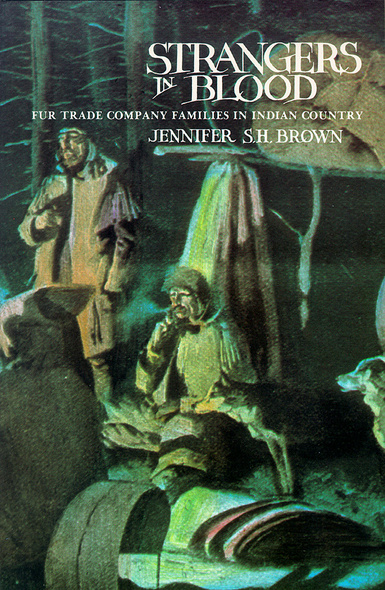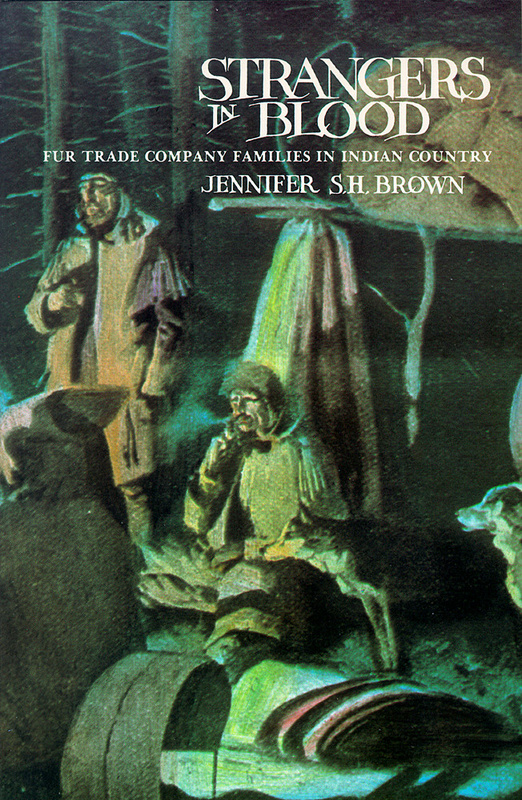For two centuries (1670-1870), English, Scottish, and Canadian fur traders voyages the myriad waterways of Rupert’s Land, the vast territory charted to the Hudson’s Bay Company and later splintered among five Canadian provinces and four American states. The knowledge and support of northern Native peoples were critical to the newcomer’s survival and success. With acquaintance and alliance came intermarriage, and the unions of European traders and Native women generated thousands of descendants.
Jennifer Brown’s Strangers in Blood is the first work to look systemically at these parents and their children. Brown focuses on Hudson’s Bay Company officers and North West Company wintering partners and clerks – those whose relationships are best known from post journals, correspondence, accounts, and wills. The durability of such families varied greatly. Settlers, missionaries, European women, and sometimes the courts challenged fur trade marraiges. Some officers’ Scottish and Canadian relatives dismissed Native wives and “Indian” progeny as illegitimate. Trades who wooks these ties seriously were obliged to defend them, to leave wills recognizing their wives and children, and to secure their legal and scoial status – to prove that they were kin, not “strangers in blood.”
Brown illustrates that the lives and identities of these children were shaped by factors far more complex than “blood.” Sons and daughters diverged along paths affected by gender. Some descendants became Métis nationhood under Louis Riel. Other rejected or were never offered that course – they passed into white or Indian communities or, in some instances, identified themselves (without prejudice) as “halfbreeds.” The fur trade did not coalesce into a single society. Rather, like Rupert’s Land, it splintered, and the historical consequences have been with us ever since.
The book makes a significant contribution to our understanding not only of the fur trade but also to anthropology and Indian-white relations.
A long-needed comoparative analysis of ... the officer class of the Hudson's Bay and North West companies before and after their merger in 1821 ... Essential reading for all serious scholars of the fur trade.
Illustrations
Preface
1 The Backgrounds and Antecedents of the British Traders
2 Company Men with a Difference: The London and Montreal Britishers
3 Company Men and Native Women in Hudson Bay
4 North West Company Men and Native Women
5 Gentlemen of 1821: New Directions in Fur Trade Social Life
6 Different Loyalties: Sexual and Marital Relationships of Company Officers after 1821
7 Fur Trade Parents and Children before 1821
8 Patterns and Problems of "Placing": Company Offspring in Britain and Canada after 1821
9 Fur Trade Sons and Daughters in a New Company
Context
References
Index





